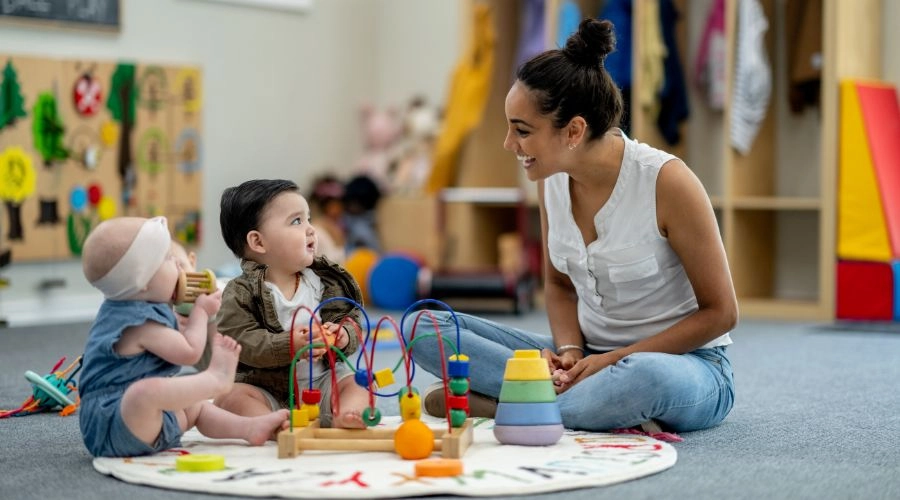Incorporating music into the classroom does more than add a splash of fun—it’s a powerful catalyst for child development. Music enrichment programs offer a wealth of benefits, nurturing cognitive, emotional, and social growth in young learners. This blog post explores how music positively influences child development, presents seven creative ways to weave music into your classroom, and provides practical tips for educators to effectively integrate music activities.
Visit https://www.paramusdaycare.com/ for more details
How Music Enhances Child Development
1. Boosts Cognitive Skills
Music education can significantly enhance cognitive abilities such as memory, attention, and problem-solving. Playing instruments or recognizing musical patterns helps children process complex information and can lead to better academic performance.
2. Supports Language Development
Music and language development are closely linked. Singing and listening to music can expand vocabulary, improve phonemic awareness, and enhance language comprehension. Rhythmic patterns and melodies help children grasp the structure and subtleties of language.
3. Encourages Emotional Expression
Music provides a creative outlet for emotional expression. It helps children articulate their feelings, fostering emotional intelligence and resilience.
4. Fosters Social Interaction
Group music activities promote collaboration and teamwork. Children learn to listen, share ideas, and work together towards common goals, enhancing their social skills and building a sense of community.
5. Improves Physical Coordination
Many music-related activities involve movement—whether dancing, clapping, or playing instruments. These actions enhance fine and gross motor skills and contribute to better physical coordination.
6. Stimulates Creativity
Music nurtures creativity and imagination. Composing songs or improvising with instruments allows children to explore their creative potential and develop innovative thinking.
7. Provides a Structured Routine
Integrating music into daily routines offers structure and predictability, benefiting young learners. Music can signal transitions between activities, making the classroom environment more organized and manageable.
7 Creative Ways to Integrate Music into the Classroom
1. Morning Music Rituals
Start the day with a music activity. Play an upbeat song as students enter or have a brief sing-along to set a positive tone for the day.
2. Incorporate Music into Lessons
Use music to reinforce academic concepts. For example, create songs about math facts or historical events to make learning more engaging and memorable.
3. Use Music for Transitions
Implement musical cues to signal transitions between activities. A familiar tune can help children smoothly move from one task to another, creating a more structured environment.
4. Include Rhythm and Movement
Integrate rhythmic activities like drumming or dancing into your lessons. These activities help children develop coordination and focus while making learning more dynamic and enjoyable.
5. Create a Classroom Band
Form a “classroom band” where students can experiment with different instruments. Encourage them to create and perform their music, fostering creativity and teamwork.
6. Sing Educational Songs
Turn educational content into catchy tunes. For instance, use melodies to teach math tables or spelling rules, making learning more engaging and easier to remember.
7. Celebrate with Music
Use music to celebrate achievements or special occasions. Whether it’s a student’s birthday or the completion of a project, music can make these moments more memorable and enjoyable.
Tips for Teachers on Implementing Effective Music Activities
1. Tailor Activities to Age and Developmental Level
Ensure music activities are suitable for your students’ age and developmental stage. Younger children may enjoy simple songs and movements, while older students might engage with more complex musical projects.
2. Encourage Student Participation
Invite students to participate in creating and performing music. Allowing them to lead or contribute increases engagement and builds confidence.
3. Explore Diverse Music Genres
Introduce a variety of music genres to broaden students’ musical experiences. Exposure to different styles can enrich their understanding of music and culture.
4. Create a Positive Musical Environment
Foster an encouraging atmosphere where students feel comfortable exploring and expressing themselves through music. Celebrate their efforts and achievements to maintain enthusiasm.
5. Reflect and Adapt
Regularly assess the effectiveness of music activities and be open to making adjustments based on student feedback and observations. Adapting your approach ensures that music enrichment remains beneficial and engaging.
Conclusion
Music enrichment offers far more than just entertainment in the classroom. By integrating music into daily routines and lessons, educators can enhance cognitive development, support language growth, encourage emotional expression, and foster social and physical skills. Music infuses the learning environment with vibrancy and engagement, helping students thrive both academically and personally. Embrace the transformative power of music in your classroom and watch as it enriches your students’ educational experience, making learning a harmonious and joyful journey.






